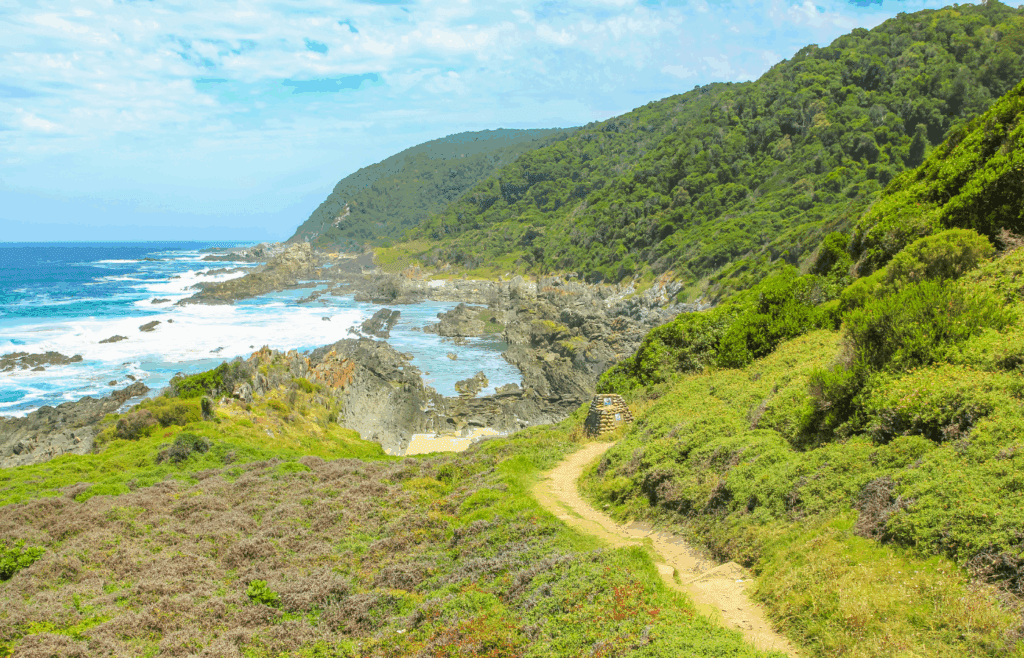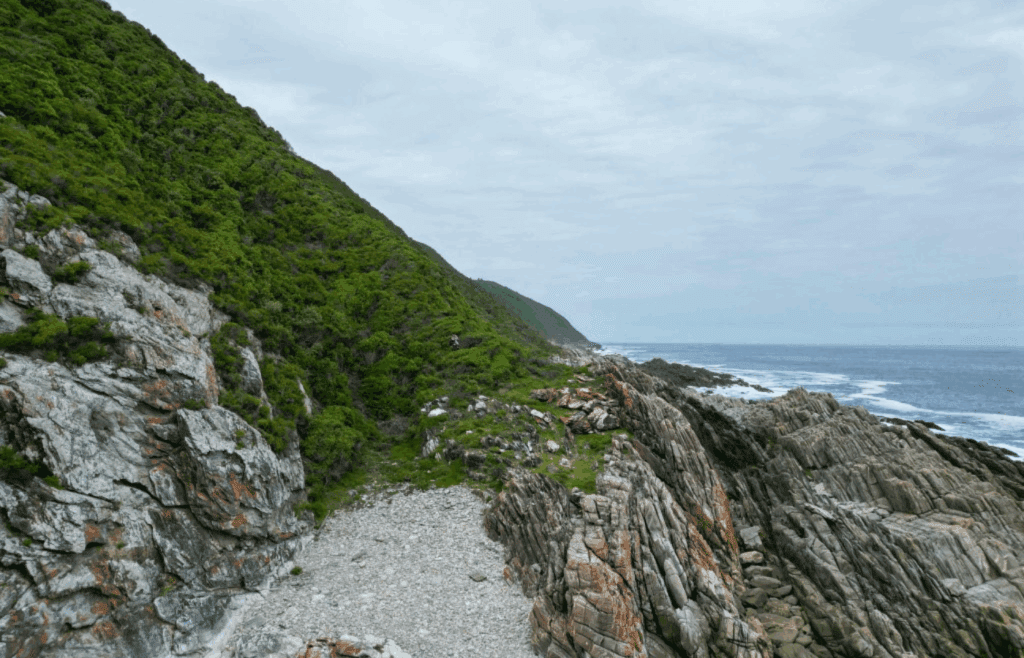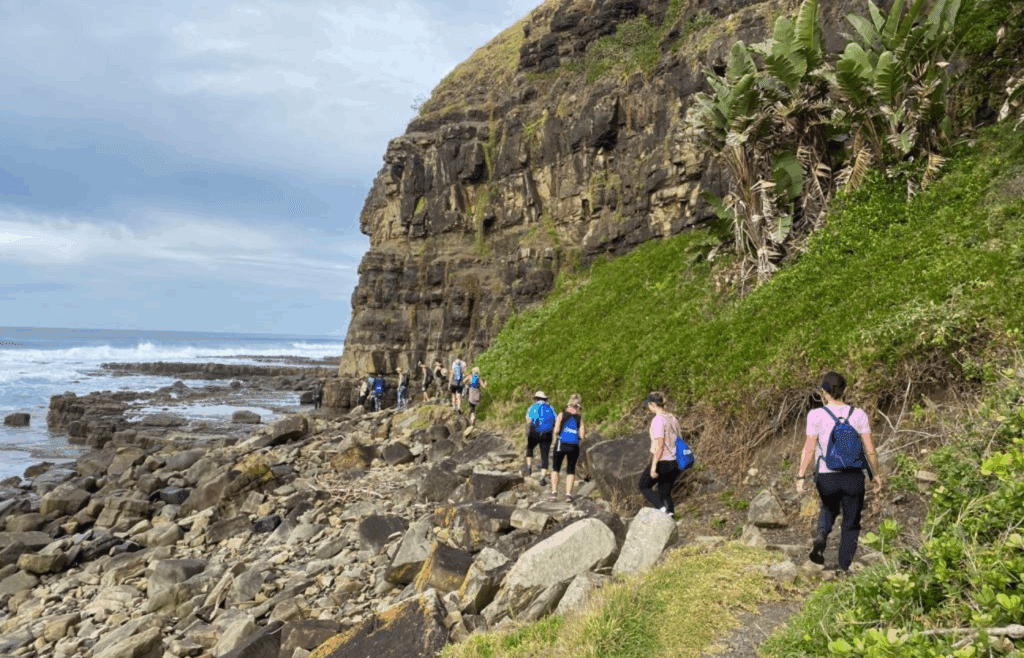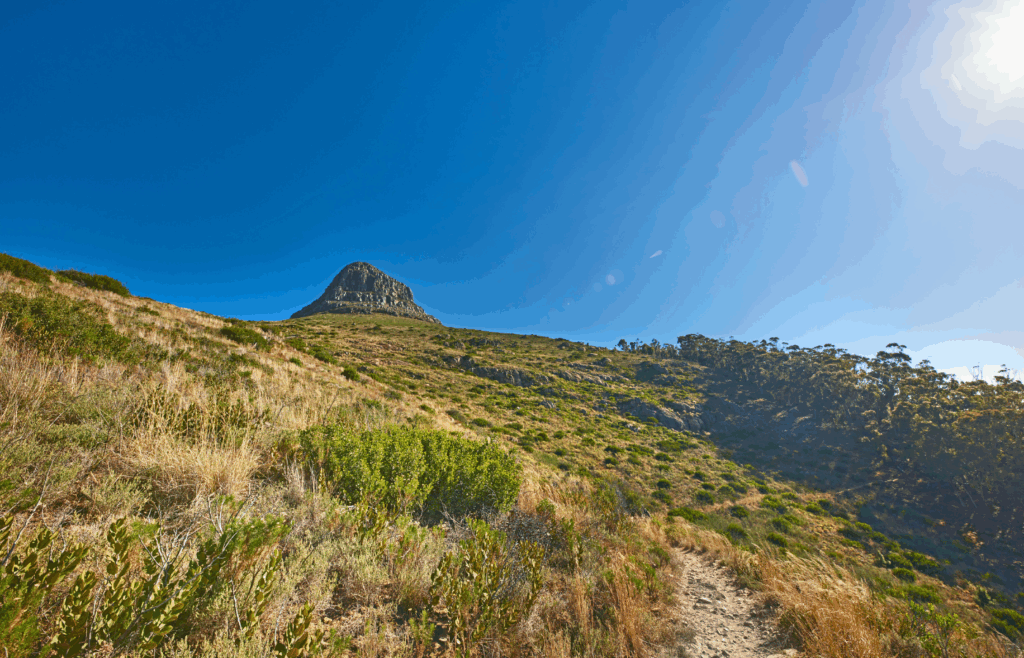
Slackpacking is a portmanteau of the words ‘backpacking’ and ‘slacking’ coined in South Africa probably around the 1990s. ‘Slacking’ in South Africa means being lazy, being halfhearted, similar to the US English term ‘bunking’. ‘Backpacking’ here refers less to the practice of budget youth travel but more to the concept of hiking with a backpack containing everything needed for survival.
Realising that not everybody is into or capable of serious unsupported hiking, slackpacking routes started springing up all over the country offering a way to access amazing natural spaces but with all the comfort, convenience and safety of being supported along the way. Slackpacking is grown hugely in popularity as walkers realise they can cover much larger distances, see more places and feel more rested after a challenging hike than before. Suddenly hiking and walking is light, joyous and fun, not necessarily onerous, challenging and extreme.
What is Slackpacking?
So how does one ‘slackpack’? The term is quite broad but differs from guided hiking quite substantially. The most basic level of slackpacking gives you a set (and easy to follow) route with basic hut-style lodging (called ‘chalets’ in South Africa) for your accommodation. Most often this accommodation is cleaned and set up with bedding and a food hamper for you before you arrive, meaning you don’t need to carry or set up a tent, any sleeping equipment, water, cooking equipment, or your breakfast and evening meal.
You would however need to carry with you all your clothing, sanitary equipment, water and food during the day. The next level up would be where you’re accommodated in more upmarket accommodation (e.g. a B&B) with food prepared for you each night. The highest level, the slackest of slack if you like, would be where you’re guided between luxurious accommodations by expert guides who bring lunch and snacks with them.
All your luggage is transported by road for you meaning that you literally just turn up and walk. Some slackpacking trails take place very close to cities, such as the hikes you can do in Table Mountain National Park. You can be fully guided, accommodated and catered for to any standard and still get a fantastic, wild, hiking experience.
What is the Difference Between Trekking and Hiking?
If you’re a seasoned global adventurer, you’ll probably agree with the Adventure Travel Trade Association (ATTA) that trekking and hiking often get conflated but aren’t the same thing. ‘Hiking’ generally means shorter, single day walks, perhaps done alone, with minimal equipment. ‘Trekking’ generally refers to longer, multi-day walks, most often done in a group, with extensive equipment.
For example, The Otter Trail, which is a right of passage in South Africa (no one takes you seriously as a South African until you’ve done it!) would very much be considered a trek over a hike. Generally the Otter is considered to be a self-guided hike – guides aren’t really necessary on this route – but on others, they are advisable or essential if the trail is poorly marked.
Slackpacking can fit into either the trekking or the hiking category although it’s mostly considered to be more in the trekking zone (as most slackpacking trails involve at least two nights and are itinerant – they go from place to place – rather than circular (where you start and end in the same place in one day). Many treks and hikes in South Africa can either be done as slackpacking or not, particularly those along the Garden Route or in Kwa Zulu Natal such as this one
Best Places for Slackpacking Trips in Africa
South Africa abounds with amazing destinations for slackpacking: that’s largely due to South Africa sitting in that rather splendid liminal zone where there’s still vast tracts of wilderness but sufficient infrastructure to make slackpacking possible and fun. Predictably, the easiest slackpacking routes are the ones closest to major infrastructure and places where there’s a concentration of wealth and resources, such as slackpacking in the Western Cape. The Otter Trail, as we mentioned above, is on the world-famous Garden Route and is so famous for its beaches, rivers, mountains and forest as well as stunning coastline and of course sea otters.
It’s almost a slackpacking trail in that you can ask for the rangers to bring food (and alcohol!) to the huts where you sleep every night but you will still need to carry your own bedding and cooking equipment. For a more slack version of the Otter, consider the Dolphin Trail which doesn’t follow exactly the route of the Otter but is very close to it (in fact the one trail almost connects with the other). The Dolphin is fully guided, fully portered and fully accommodated in upmarket (4-star) lodges.
Within the Western Cape, there are stunning slackpacking trails such as The Fynbos Trail in the Overberg region and the Wupperthal66 in the Cederberg Wilderness Area region which are ‘true’ slackpacking trails just like the Dolphin – you can however opt for less support and a lower standard of accommodation if you like to keep the prices down. Further afield, there are slackpacking options at Victoria Falls in Zimababwe such as the Batoka Gorge Hike and in the stunning Isimangaliso UNESCO park in Kwa Zulu Natal such as this one. You can also look at slackpacking deep in the Karoo, the vast arid region that dominates the western and northern sections of South Africa.
Five Ideas on Slackpacking
There’s so many varieties of biome to slackpack through: here are five ideas for slackpacking you could consider: keep it super flat and easy (such as our Wild Coast Hotel Hopper) which takes you between three hotels on the Wild Coast in the Eastern Cape, literally strolling along the beach for four days but with a comfortable bed and lovely food every night. If you’re fit and want to stretch your legs more but don’t want to forego the comforts of the city, consider The Lion Trail which takes a slow walk up a small mountain right inside central Cape Town.
In the splendid Drakensberg region, which is admittedly harder to get to, there is the stunning Ampitheatre Trail which is moderate in elevation but offers waterfalls and beautiful views of the mountains as you walk. You may also like to make your slackpacking trip more cultural in scope such as with our Venda Walking Holiday which takes you from village to village with local Venda guides in this remote region of South Africa near to Kruger National Park. As you walk you’ll be regaled with stories of the natural environment you are walking through and in the evenings, will hear stories and oral history from senior Vendas. Accommodation is in comfortable traditional village huts.
Why You Should Try Slackpacking
Even if you’ve never been hiking (or camping) in your life, slackpacking is really something everyone should try: after all, we’re constantly being told (or looking) to slow our lives down, at least on holiday. Because the pace of movement is deliberately slow in slackpacking and the physical demands deliberately light, many people (of all ages and all standards of fitness) find slackpacking deeply restorative where other more demanding or fast-paced methods of travel are less so. Slackpacking also has a very low carbon footprint, of course, which on some trails is close to zero.
Many slackpacking trails are sufficiently close to roads that you can seriously consider doing them with children and older adults as a vehicle can be brought to the trail to collect them should distances be too far. The real delight of slackpacking is that it’s a preparation-less and stress-free exercise. You don’t need to worry about whether you’re going to sleep, where the next meal is coming from, if you’re on the right path or anything logistical at all. You can take as much luggage with you as you like and you’re assured that every night, you can rest in a proper bed! Fill out the short survey on our site here and let’s get you out there!
No matter what your level of fitness, slackpacking has completely changed the accessibility (and enjoyment) of hiking. Strip away the expense of hiking gear, the preparation, the experience required and, let’s be honest, the discomfort and sheer hard work of conventional hiking and you have slackpacking.
Add on to that the ease with which it’s possible to slackpack in South Africa with myriad routes particularly in the southern parts of the country such as this one and the reasons to give a slackpacking trip a go (the ease, the convenience, the comfort, the immersion into nature and the sheer carefree nature of it) mean it’s a must do! Take a look at our page on hiking and walking and let us know your favourite bipedal adventure.






